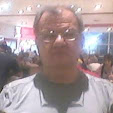THE WASHINGTON POST
SUMARION.COM
MATERIA ESPECIAL CARACAS PEDE SOCORRO
A VIOLENCIA ULTRAPASSA RIO DE JANEIRO E SÃO PAULO JUNTAS.
SÓ PERDE PARA SÍRIA !‘Caracas by day torments and by night terrifies’
“Caracas by day torments and by night terrifies” — Hector Torres
It happens every day, as sure as the sun rises over the biggest favela in Latin America in Caracas — death is one of the few guaranteed things you can find in Venezuela.
The government has been able to censor the country’s main newspapers, so you won’t read much about crime in the media. There are no official tallies of deaths related to violence, but some NGOs put last year’s national death toll as high as 24,000, which would make a total of 252,000 deaths since the revolution came to power 17 years ago.
There are an estimated 200,000 members of the Venezuelan security forces, but it doesn’t seem like that is enough. Over the past 17 years, there have been at least 23 security initiatives, but violence hasn’t gone down; it has increased. Law enforcement officers work for low wages and with little or no logistical support. The CIPC (forensic police), prosecutors and judges are overwhelmed — they are sometimes faced with as many as 700 cases a month. With numbers this high, criminals often go free and continue to perpetrate crimes because there are no real repercussions for them.
Violence permeates everyday life here. In the streets, gangs clash with one another, with the police and with the army. Sometimes, police even clash among themselves. All of these factions wield power and abuse it. Caught in the middle of all of this, ordinary citizens buy guns to protect themselves. Whether it’s the loss of a friend or a relative, everyone here has been touched by violence. Death is in the air.
Venezuela is a country that seems to be at war with itself. It’s not always clear who is who. It’s hard to know who to trust or who your enemy is, so you’re always looking over your shoulder, waiting for the next blow, unsure of where it will come from. Violence has so saturated life here that people have begun to see it as normal.
Most of the time, the people who are supposed to protect are the ones who harm civilians. The police and the military are without a doubt involved in kidnapping, extortion and even robbery. One night, a couple of photographers and I go with the police on a night patrol. It quickly becomes obvious that they were putting on a show for us. But after the patrol, I see two plainclothes officers interrogating a couple of guys outside a liquor store, slapping them when they give answers they didn’t like.
The government spends seven times as much on weapons to defend the country against a hypothetical U.S. invasion as it does on civilian safety, but the real war is inside our borders. And you can see it: The city looks militarized, and it’s normal to see soldiers in the street or in the supermarket with automatic weapons.
In a mega-slum in Carapita, I meet a man wearing a bulletproof vest, hiding his face and holding a shotgun. He is the personification of death, the person we’ve learned to be afraid of. He asks me to call him “Jhonny.” Jhonny is a malandro (which translates into “young thug or criminal”). Between laughs he tells me how he and his cohorts once killed a guy, saying, “We make him dance,” meaning they shot at his feet first. He stops laughing when he notices that I’m not laughing. Then, in a moment of sincerity, he says he knows that the lack of support from his parents pushed him to become a malandro and that he never knew any other way of life. “I’m here because this is what I learned to do,” he tells me.
Jhonny is 25 years old. I’m 27, and the difference between us is that he shoots to kill and I shoot to publish. He’s afraid to die, and that’s why he uses the bulletproof vest and has bodyguards. He has a family and says he doesn’t regret the path he has taken. He says the only thing he would regret is that he would die and his son would choose the same life he has lived.
I photograph the funeral of a boy named Gabriel Vizcaya. He was 5 when a grenade exploded near him. His funeral is beyond emotional. A small crowd gathers near the hole in the ground — his baseball teammates, kids his age. The kids sing. His mother cries as she sits in a wheelchair. She is in a wheelchair because she used her body as a shield to protect her daughter. That woman is a hero and a victim at the same time.
I’m not religious, but I pray. Somehow just taking photos isn’t enough. I feel the need to try to help that poor kid find some peace, even though I’d never met him. For the first time, I cry while I am photographing, and for the first time, the camera isn’t a shield. I don’t want it to be a shield.
Kevin Ramos was on his way home for lunch one morning when he was murdered. He had been targeted after getting into an argument with some local gang members. His mother, Cantalicia (above), had to bury her son. As she holds her granddaughter, Kevin’s daughter, she says: “Every time I see her I see my son.” All that Cantalicia has to remind her of her son are her granddaughter, his dog and his dirty clothes.
A man sits after being saved by the police when a mob tried to lynch him. Lynching has become the mode of justice because the police usually don’t show up. Social-media videos of people being burned are common these days. A crowd had accused the man of being a robber. One man grabbed the accused and yelled at me, “Take the photo!”
“Help me please,” begged the accused, “please, just help me.” Meanwhile, a furious mob tried to use him as an example, and some wanted to kill him. People were yelling, “Kill him, burn him … let me stab him.” I felt useless and powerless. Violence had become the judge and jury. Luckily, the police arrived in time to save the man.
“Help me please,” begged the accused, “please, just help me.” Meanwhile, a furious mob tried to use him as an example, and some wanted to kill him. People were yelling, “Kill him, burn him … let me stab him.” I felt useless and powerless. Violence had become the judge and jury. Luckily, the police arrived in time to save the man.
This project was made possible by the Emergency Fund by the Magnum Foundation.































